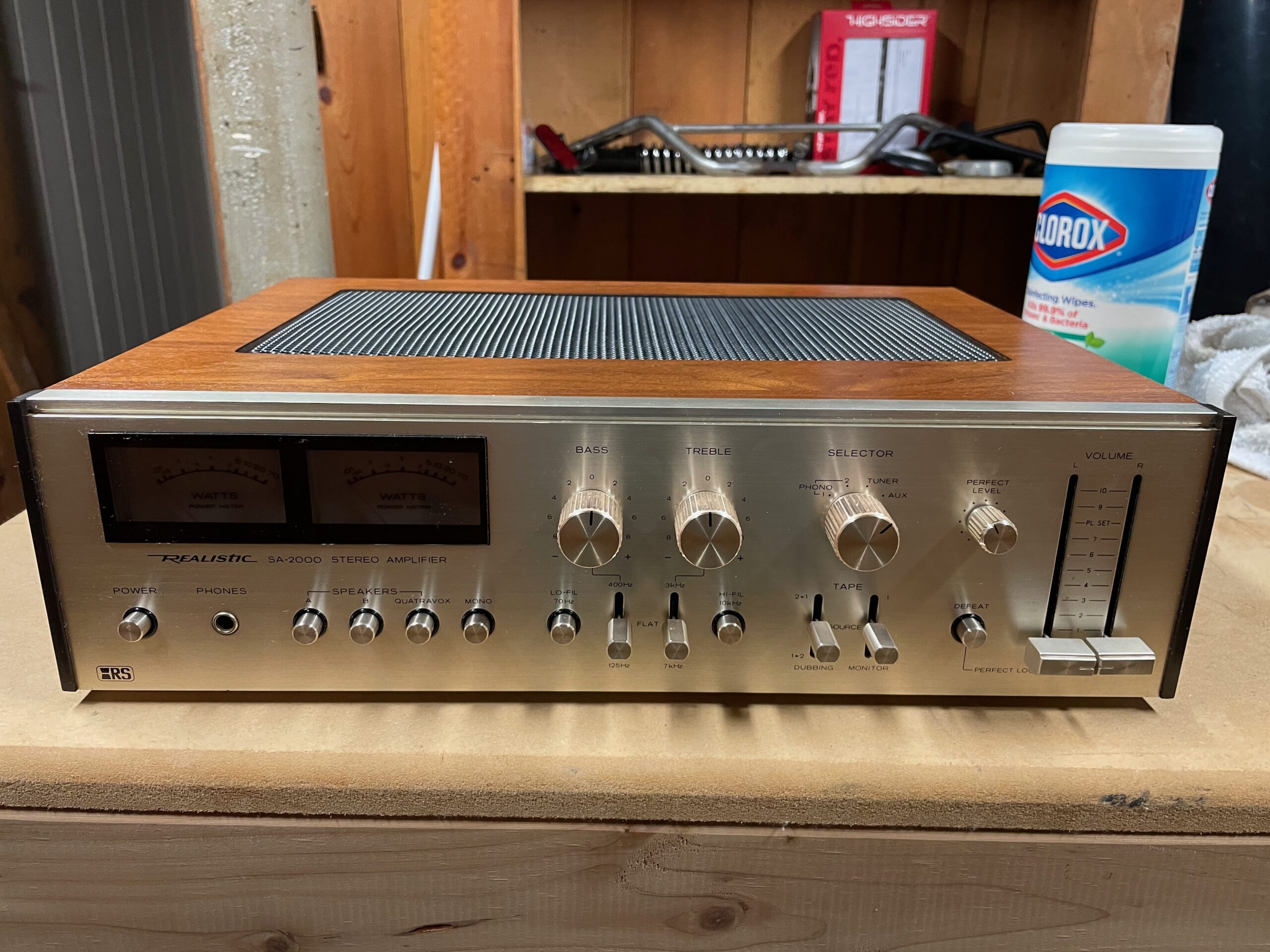To this point, the components of my new-to-me home stereo have come from my parents. The missing piece is a Realistic STA-2000 stereo receiver. I think I mentioned this before, but that thing bit the dust years ago. Dad took it in to get it fixed but it either wasn’t salvageable or the small business repairman’s backlog was too deep and he eventually closed up shop. Either way, it’s long gone. It’s too bad. By all accounts I’ve read of the STA-2000 online, it was a badass receiver at 75 watts per channel.

So I took to the eBay. I wanted to keep it in the Realistic family. Obviously, because that’s the brand of the Mach Ones and the turntable. But also because Realistic was a low-flying, but very respectable competitor to Pioneer, Sony, and the like, back in the late 1970s and early 1980s. Owned by Radio Shack, which was owned by Tandy (a leather company?), which outsourced production to Japan, the electronics capital of the world.
The STA-2000 was too pricy for my liking. Upwards of $300 on eBay. And, to be honest, I don’t need all that power. And I don’t need a tuner. So I started looking into Realistic’s line of integrated amplifiers from the era. The main difference between a receiver and an integrated amplifier is the tuner. They both power speakers and they both have bass/treble/etc controls.
I found an SA-2000 on eBay for $75, which seemed super affordable compared to the STA-2000. A good SA-2000 will sell for %150 or more. This one was cheap, but it wasn’t tested. At least it wasn’t tested with speakers. It turned on and lit up. The knobs turned. The rest was unknown. The seller had a great rating, I assumed he picked it up cheap to flip it, and I took the leap. When it arrived, it looked pretty darn good. It even still had the ‘Genuine Walnut Veneer’ sticker. The exterior finish had some wear on both the wood and the front face. the speaker and component inputs on the back were a little gunky and dusty.
Now, the SA-2000 isn’t quite as powerful as the STA-2000. The STA pushes 75 watts per channel while the SA only pushes 55. Not a deal breaker for me — at all.
I plugged my speakers and a laptop in as-is and gave it a shot. It worked! Sort of! The left channel only worked in mono mode, which replicates the input sound across all channels — so, the opposite of stereo. Again, I took to the internet. Turns out this isn’t an uncommon problem for old receivers and amplifiers. Then, I reached out to my friend Chip, who has some experience with vintage stereo equipment.

Chip, along with internet forums said to start with some contact cleaner that’s safe on plastics. I ordered some and when it arrived, I started the cleaning and refinishing process that I’d also done on the Mach Ones. I removed the wood case, lightly sanded, and refinished it. It looked great. The front face was a little tougher. I think it’s made of aluminum. I know it was tricky to clean. It had some smoke staining. I got it as clean as I could, and there was nothing I could do about the little scratches.
With the case off, I took to cleaning everything that moved or connected something on the SA-2000. All switches, all knobs, and sliders. All plug connectors on the back. Everything. Then I let it dry for a couple of hours. Then I lugged it upstairs and plugged in the speakers. Then I googled songs with great, noticeable stereo channel play, and queued up David Bowie’s Space Oddity.
And it worked! Took a few seconds to come around on the left channel, but it’s there and it sounds clean. And after a week of pretty consistent play, it still sounds great.
Outside of re-covering the speaker grills, the stereo restoration project is almost finished.





